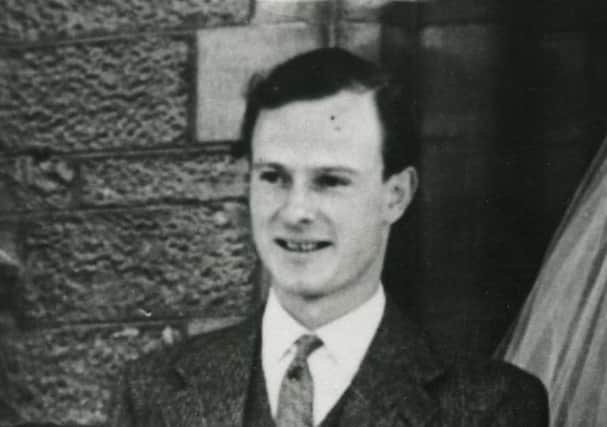Obituary: James Carnegie, 3rd Duke of Fife


The 3rd Duke of Fife inherited several ancient Scottish titles and a large estate in Angus and Fife. Although he had strong royal connections – he was a second cousin to The Queen – he was content leading a quiet life overseeing the management of his estates. He was a well-known figure in Fife and Angus community – respected as an experienced and canny landowner who preferred to remain out of the public eye.
James George Alexander Bannerman Carnegie was the son of Lord Carnegie and held the courtesy title the 11th Earl of Southesk. The family had long connections with the Stuarts and held substantial land at the imposing Kinnaird Castle near Brechin.
Advertisement
Hide AdAdvertisement
Hide AdSeveral Stuart Kings had stayed at Kinnaird and the 1st Marquess of Montrose resided there for three years in the 17th century.
The Earldom was granted to the Carnegie family by Charles 1 and from his mother’s side of the family Lord Fife inherited a dukedom. She was Princess Maud, the younger daughter of Alexander Duff, Earl of Fife, who married Princess Louise, daughter of the future King Edward VII, and was created Duke of Fife by Queen Victoria in 1900.
Through his elder daughter the titles passed to Lord Carnegie in 1959. In 1992 he succeeded his father as head of the Clan Carnegie. In recent years Lord Fife has been represented as head of the Clan by his son Earl Southesk.
Lord Fife attended school initially at Stonehaven and grew up with the two young Princesses Elizabeth and Margaret. Lord Fife often went to Balmoral for family celebrations and attended birthday parties and dances in the castle.
He attended Ludgrove School in Berkshire then Gordonstoun. He did his national service, as a private, with the Royal Scots in Malaya (1948-50) and then studied land management at the Royal Agriculture College, Cirencester. From his youth he had wanted to be a farmer and on leaving Cirencester settled down to manage the family estate which comprised some 20,000 acres.
Lord Fife was involved in local affairs and devoted much of his time to helping various well known Scottish institutions, most noticeably the Braemar Highland Gathering. In fact, his family had a long-standing connection with the Gathering.
The 12-acre site of the famous Gathering was originally donated by the Duke of Fife in 1906 and it is still known as the Princess Royal and the Duke of Fife Memorial Park.
The Duke was appointed a vice-president of the Gathering in 1959 and has maintained a close interest in various aspects of the organisation. The Gathering’s secretary, William Meston MVO, told The Scotsman yesterday: “His Grace was always at the top of the stairs to the Royal Box with the other vice-presidents to greet The Queen. He then sat with the royal party in the box. He was a quiet and gracious man and was mostly concerned at the Gathering with ensuring the correct procedure for the massed bands. He also maintained a close eye on the presentation of the trophies.”
Advertisement
Hide AdAdvertisement
Hide AdLord Fife, throughout his life, was a keen sportsman and served as a vice-president of the British Olympic Association and president of the Amateur Boxing Association (1959–63). He also did much to support West Ham Boys Club.
One of his lifelong passions was motor-racing and fast cars. He drove a Bentley (a much favoured make) in the Monte Carlo Rally in 1955. He continued to support Carnegie Films, a production company set up by his father.
For many years he lived at Elsick House near Stonehaven in Kincardinshire, which served as the headquarters of the clan Carnegie. In later years he returned to live at Kinnaird House.
The Duke was involved in the identification of the remains of Tsar Nicholas II. Lord Fife’s maternal grandmother, Queen Alexandra, and Nicholas’s mother were sisters, and the Duke’s DNA proved that the bodies found outside Ekaterinburg after they had been shot by partisans were authentic.
The Duke of Edinburgh, whose maternal grandmother was the Empress Alexandra’s sister, provided the DNA match for the rest of the family.
In his youth Lord Fife cut a dashing figure. He was a handsome man and impressive in his full dress kilt. He was often photographed with a beautiful woman on his arm and his name was mentioned as a possible suitor for Princess Margaret. In fact, he married a member of the Dewar whisky family in 1956, in full Highland dress. Caroline Dewar was the daughter of Lord Forteviot, chairman of the Perth distillers, John Dewar & Sons.
The marriage was dissolved in 1966. They had a daughter, Alexandra, and a son, David Carnegie, the Earl of Southesk, who now become the 4th Duke of Fife.